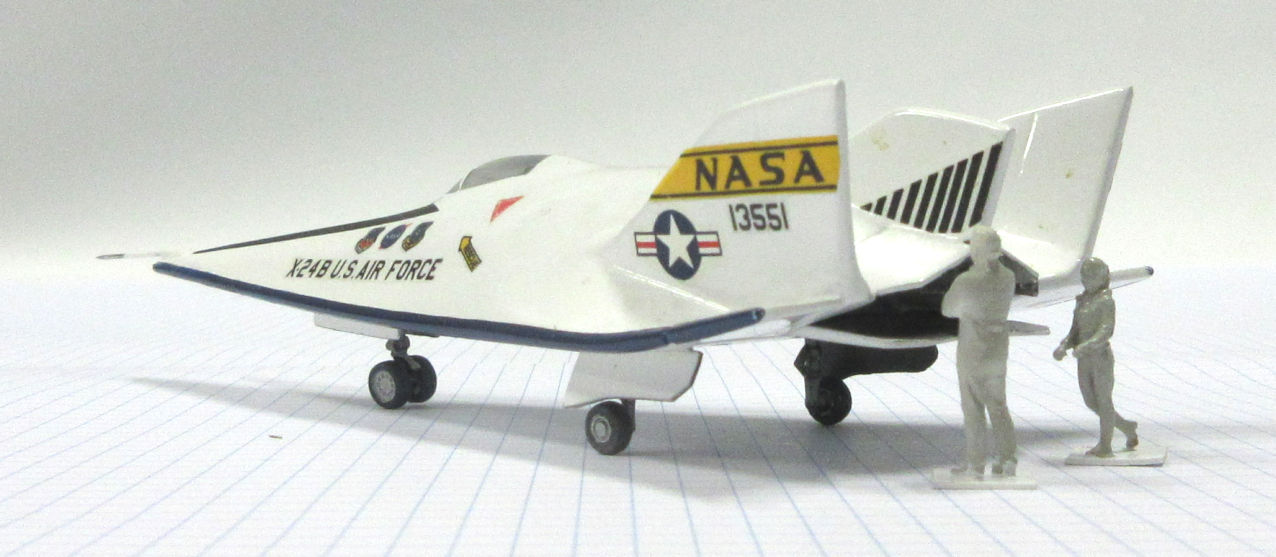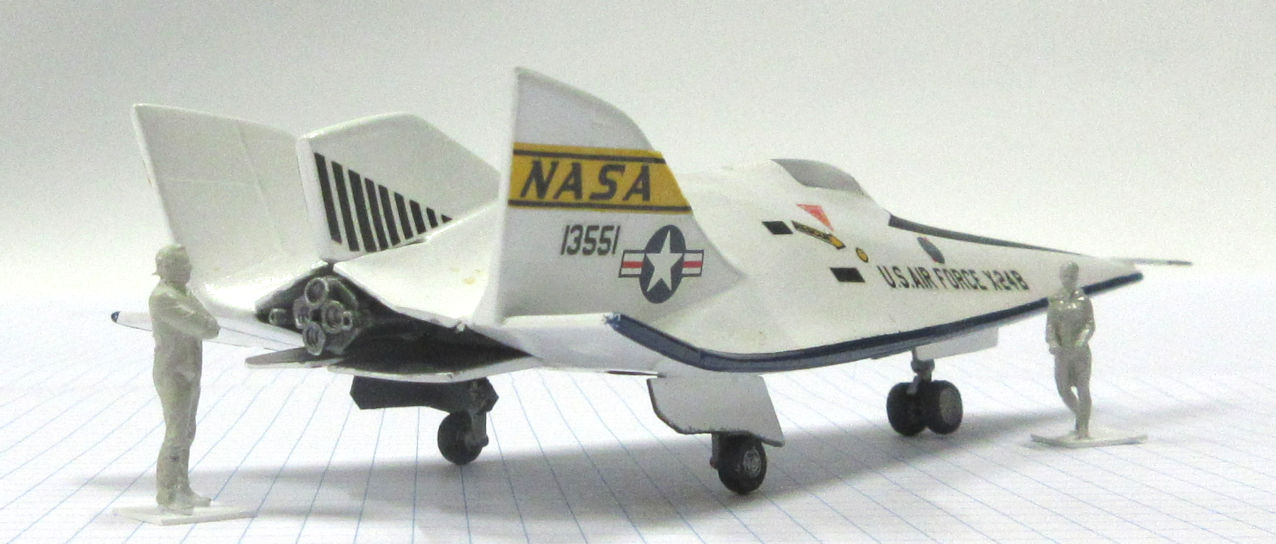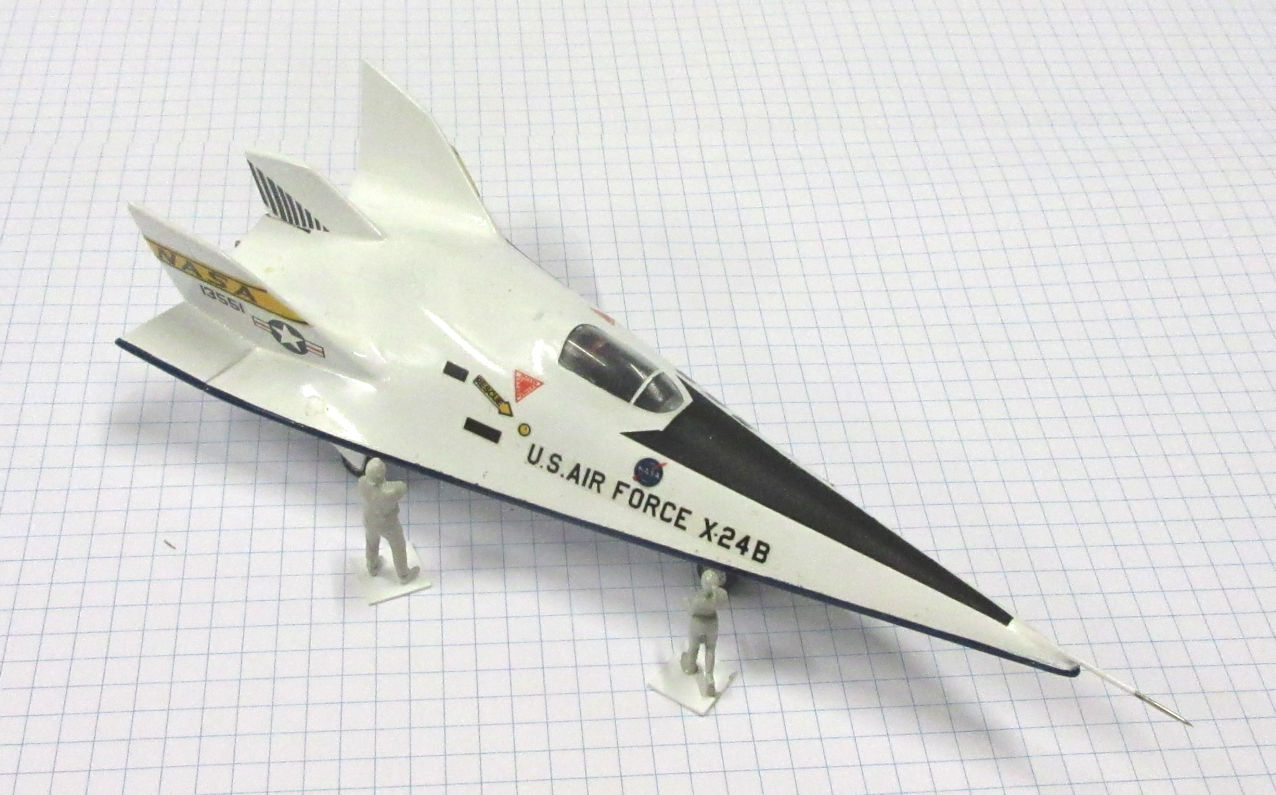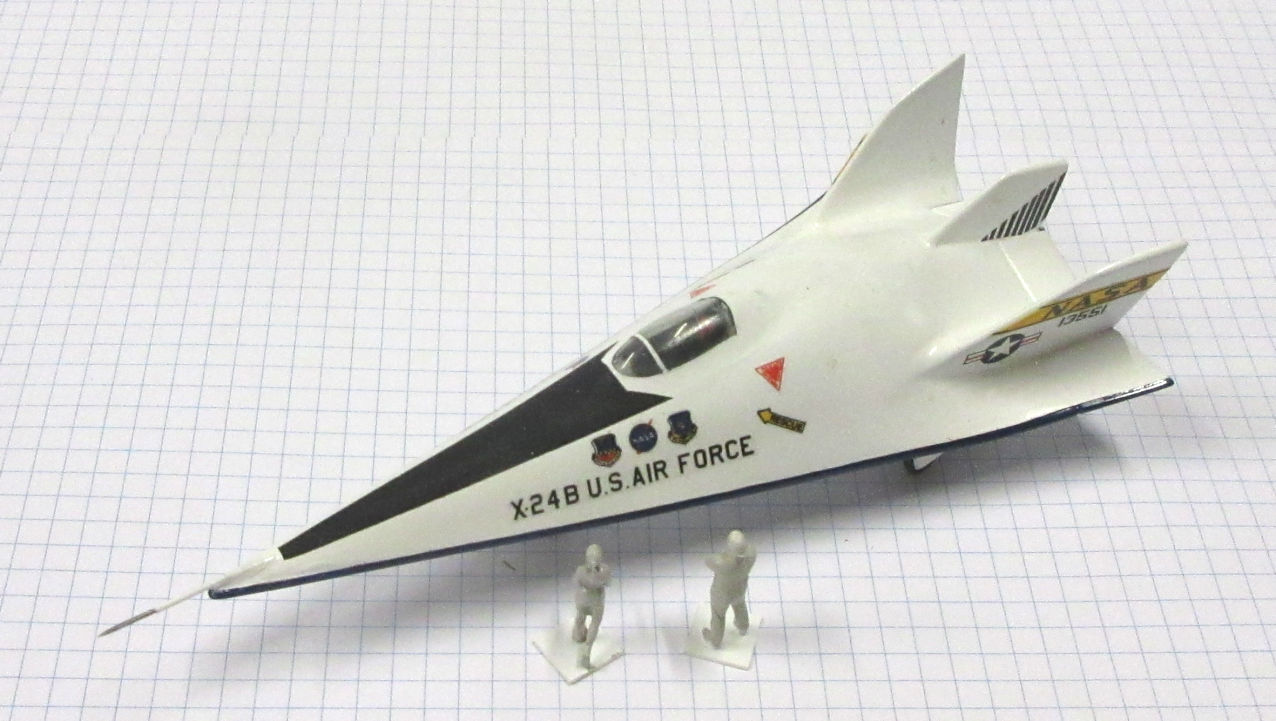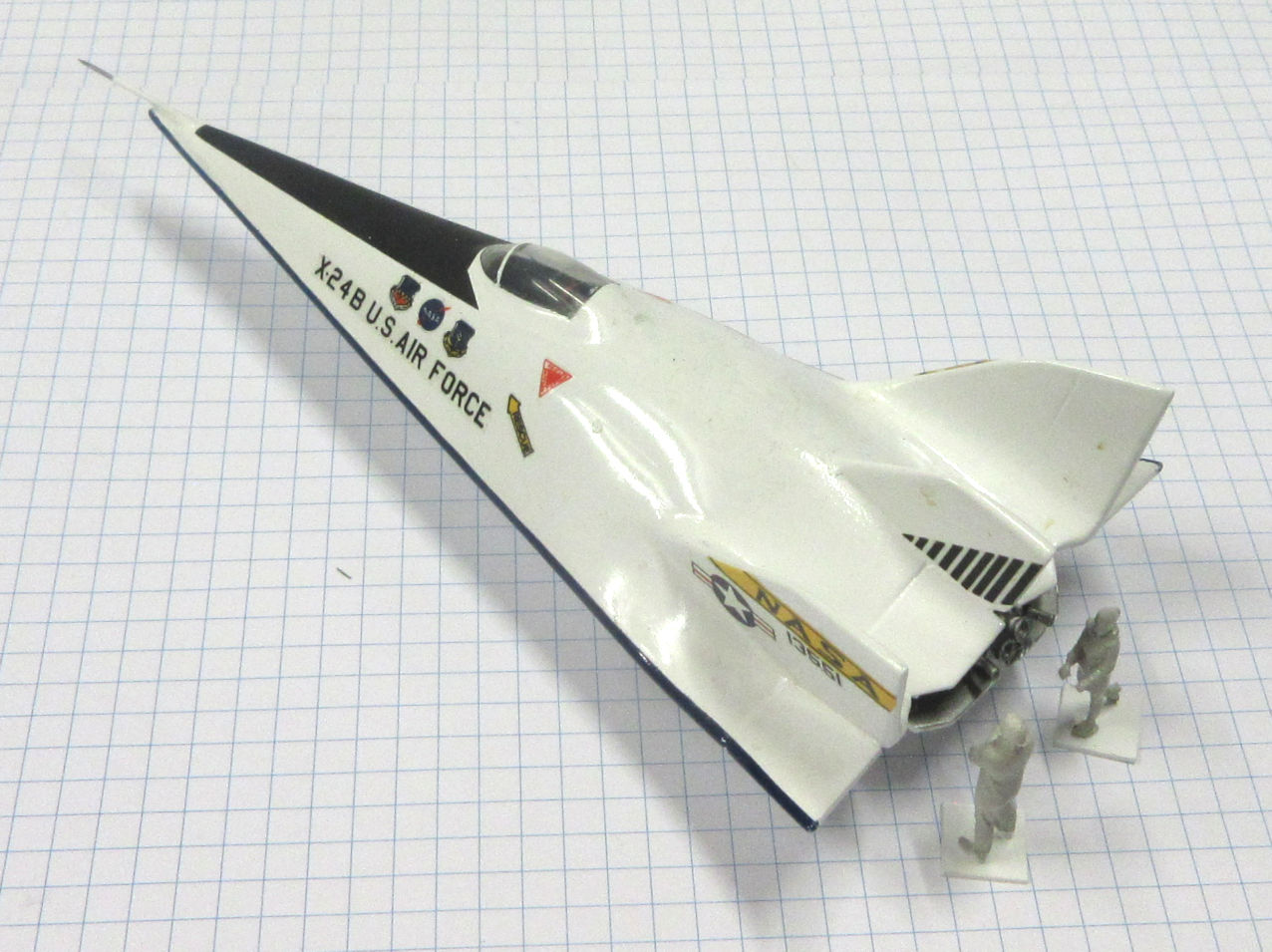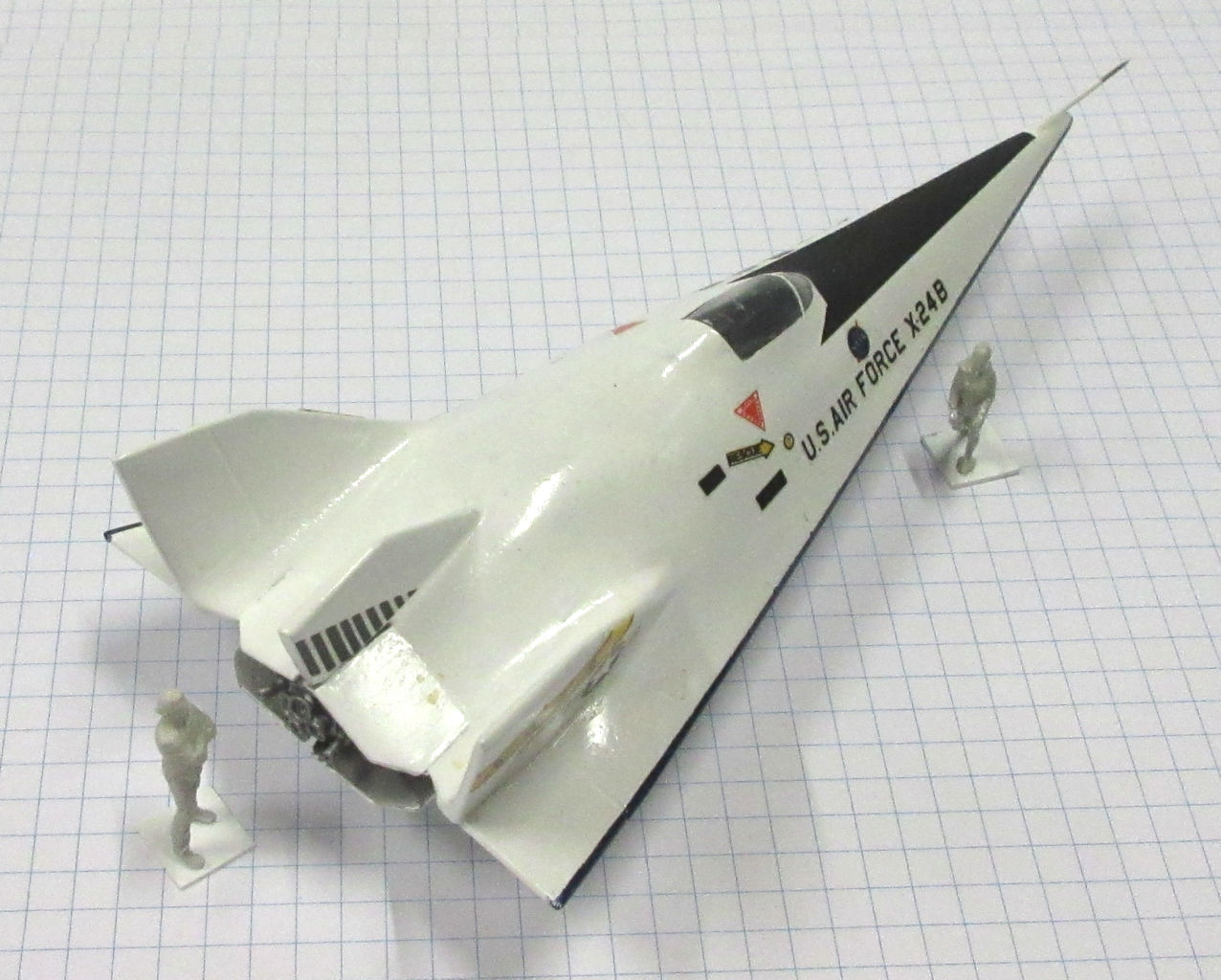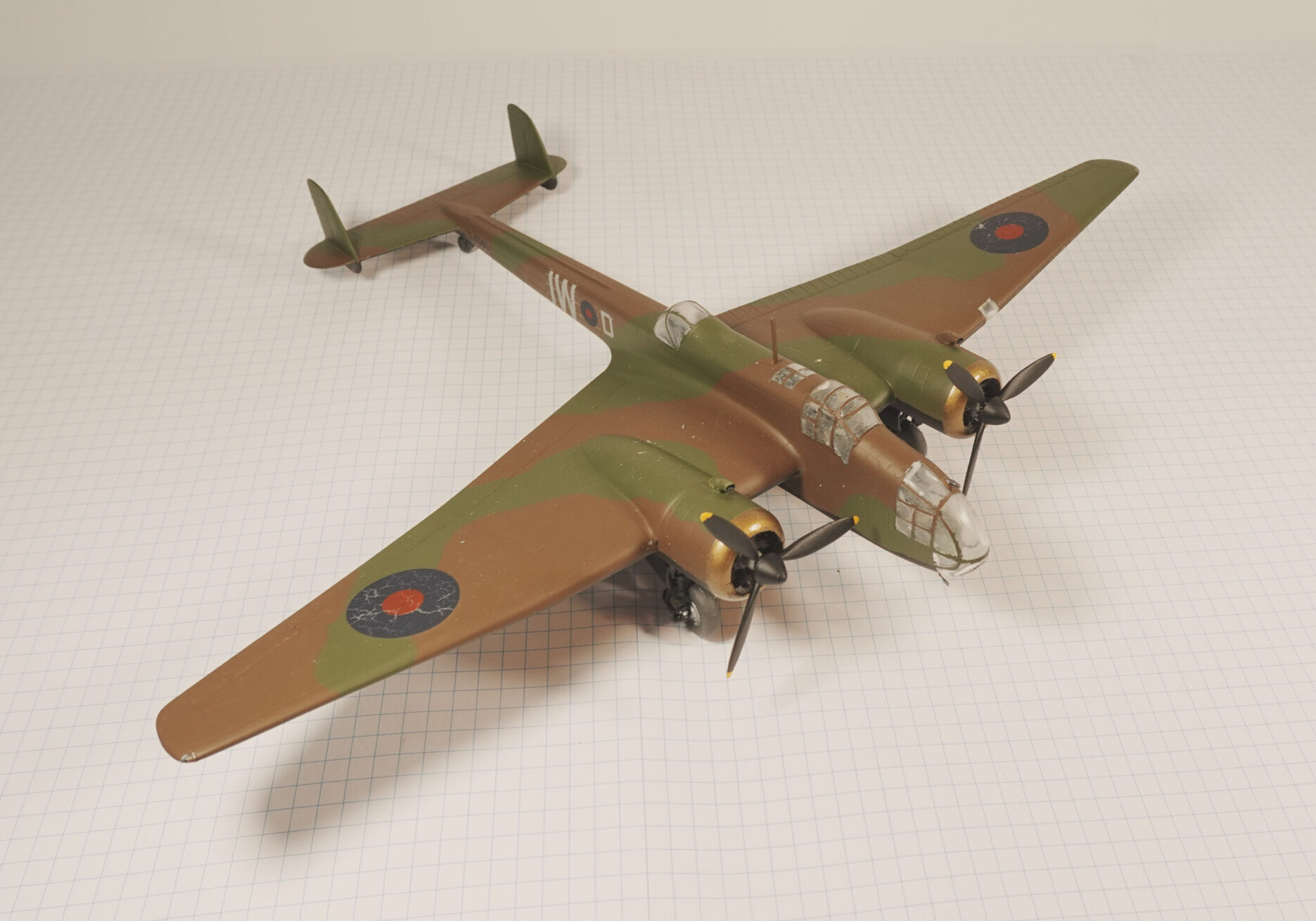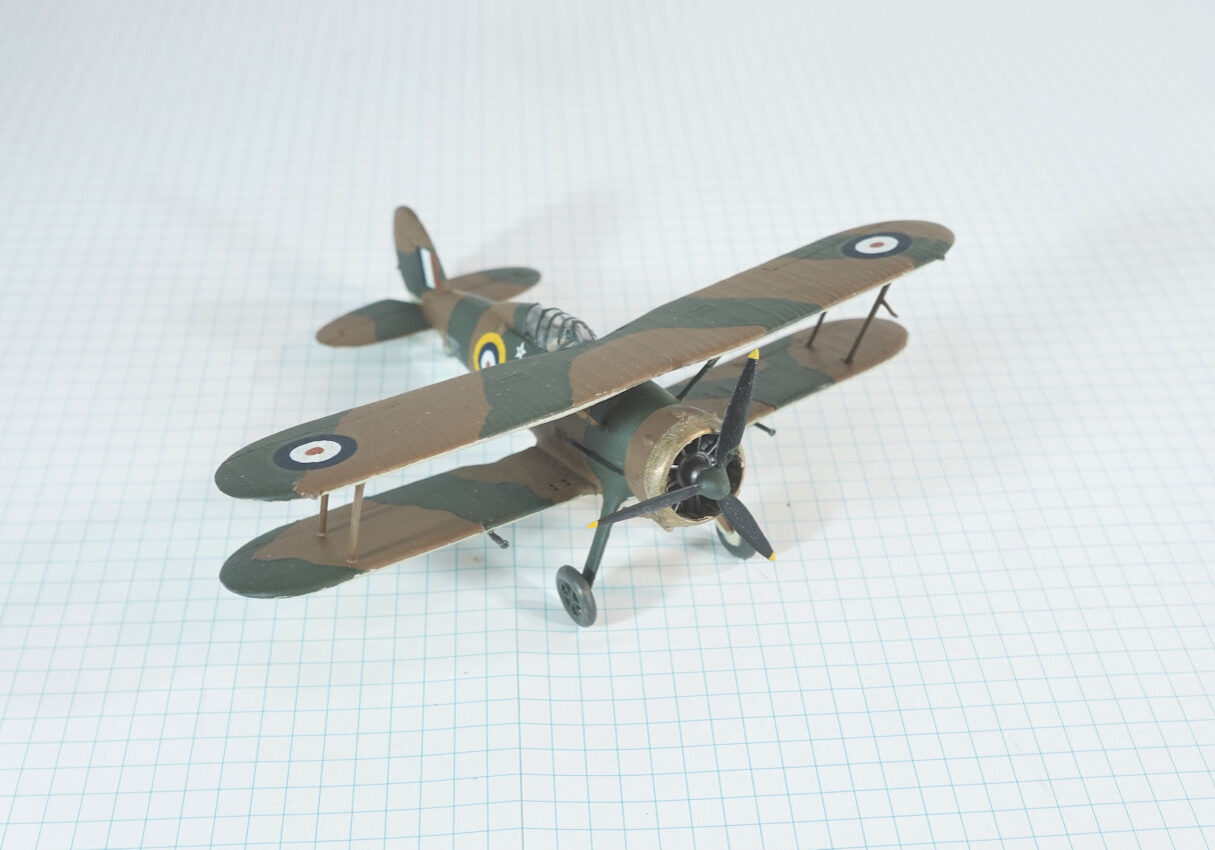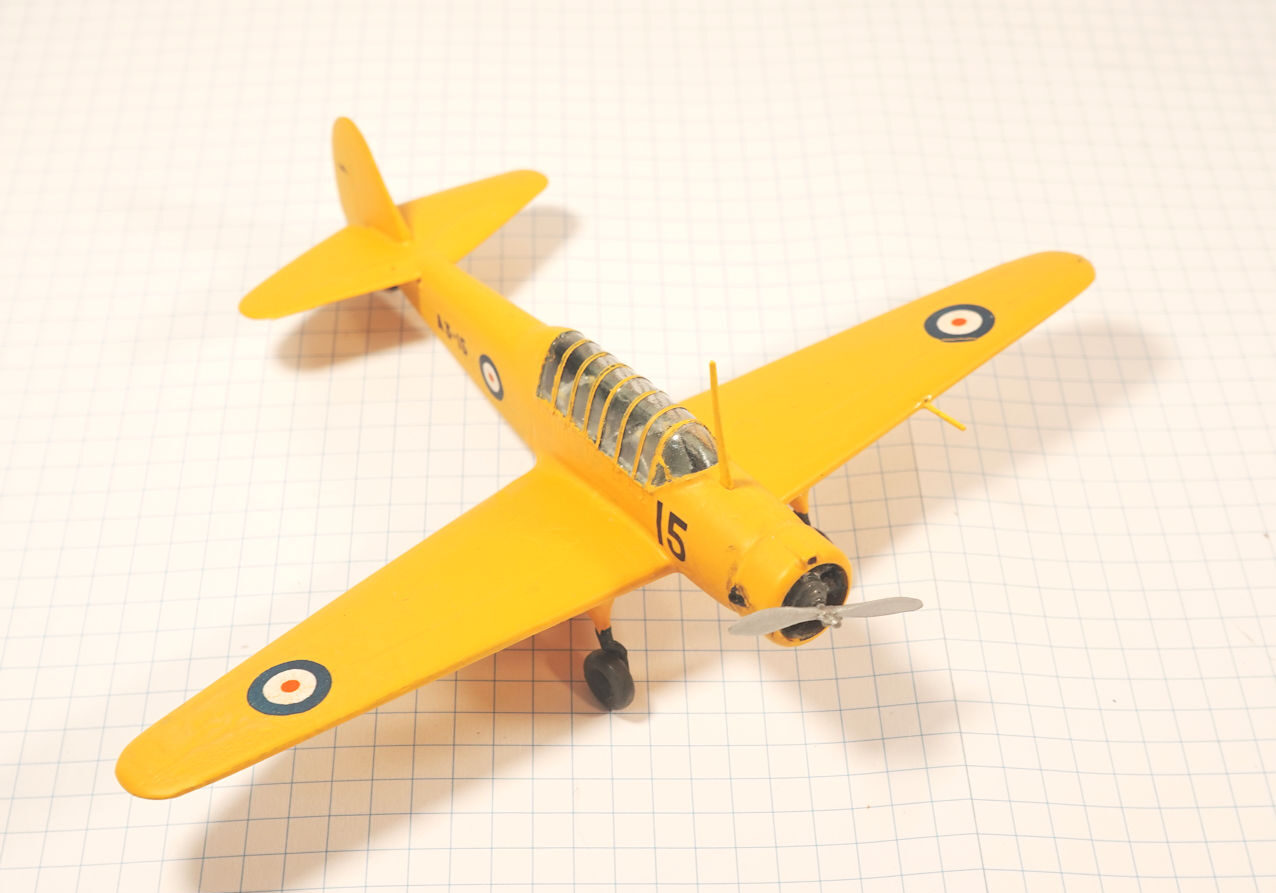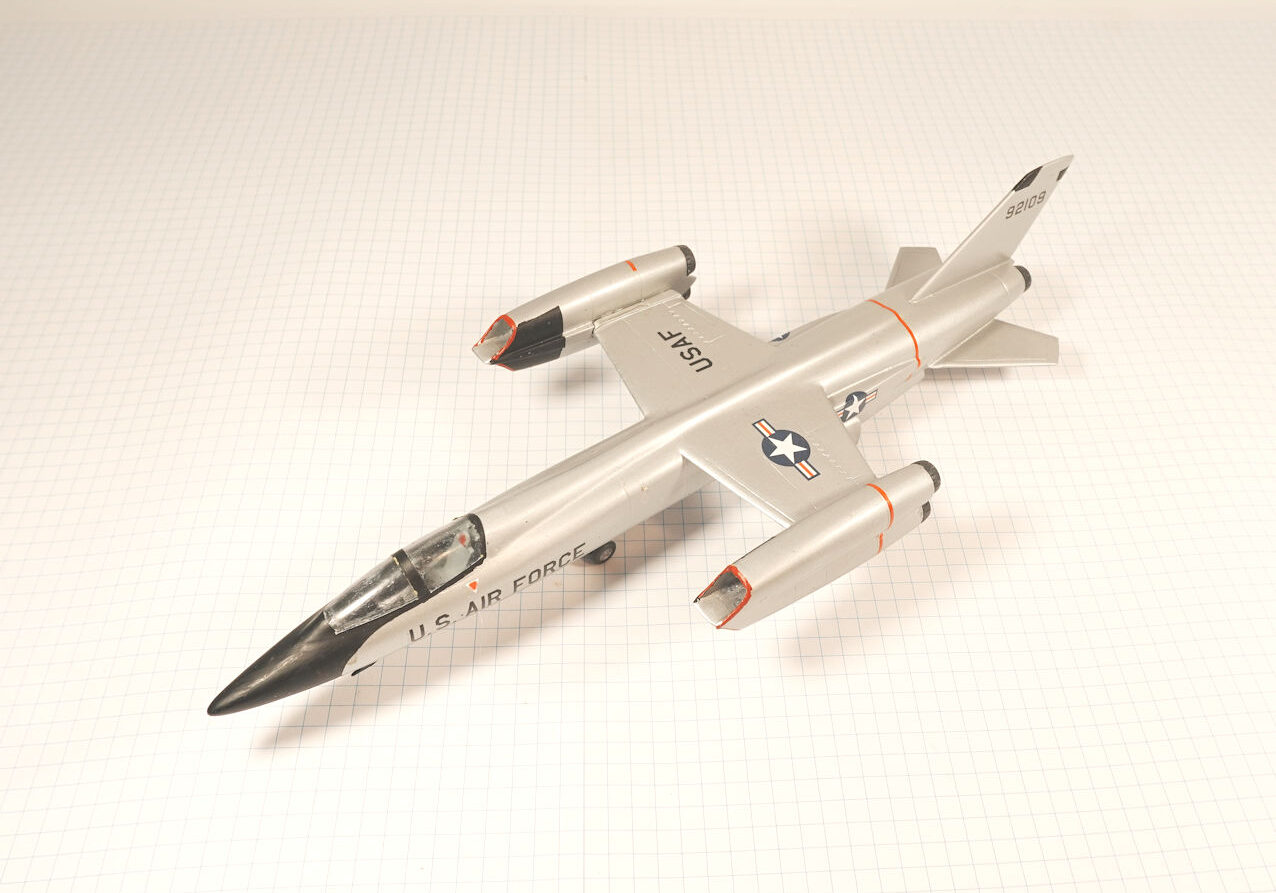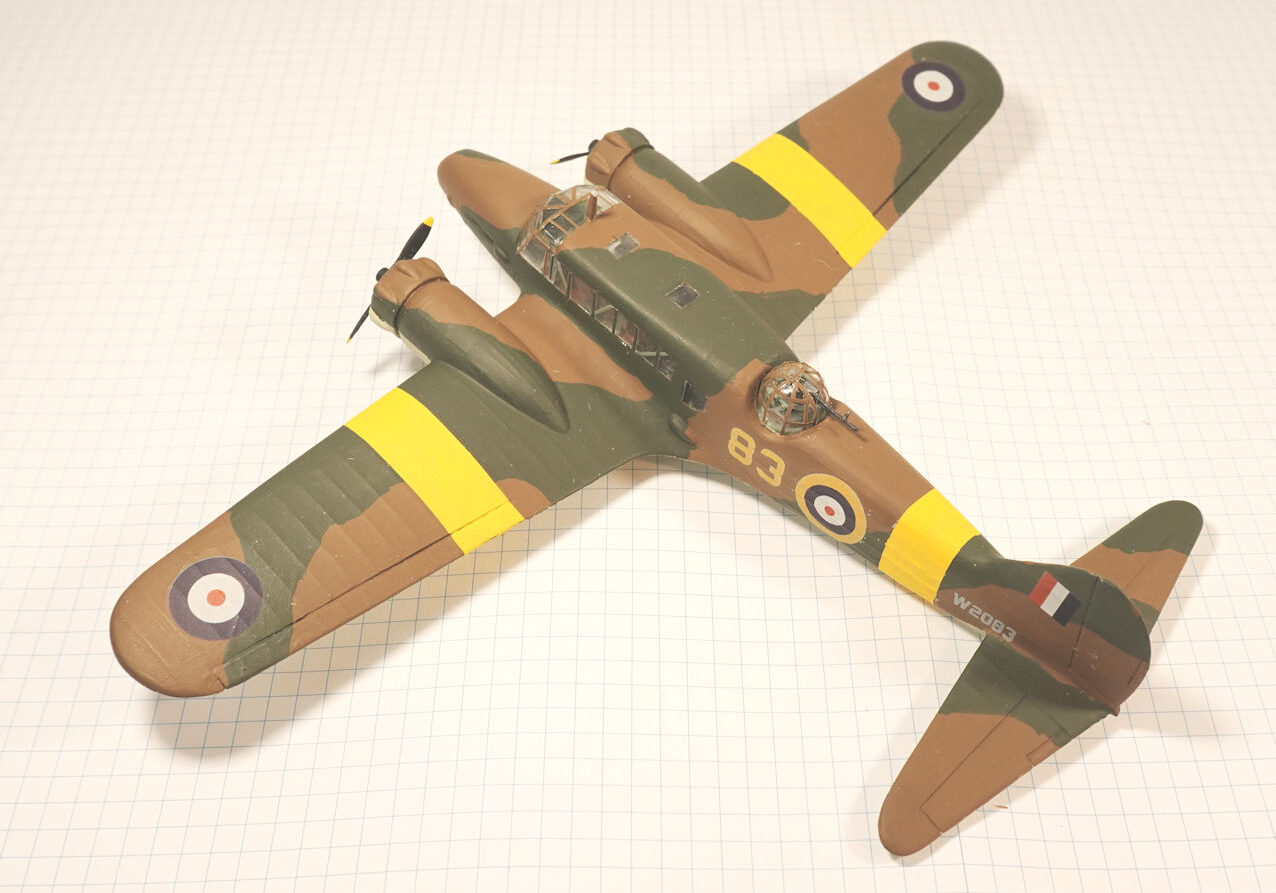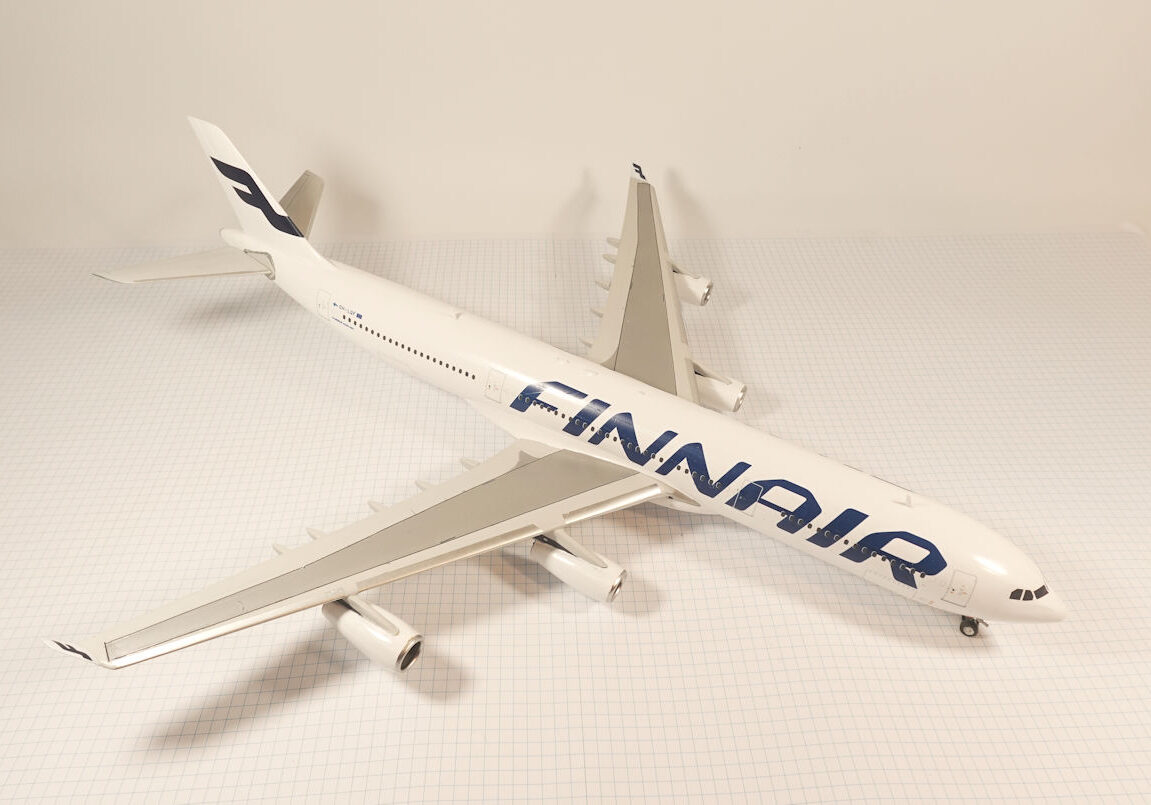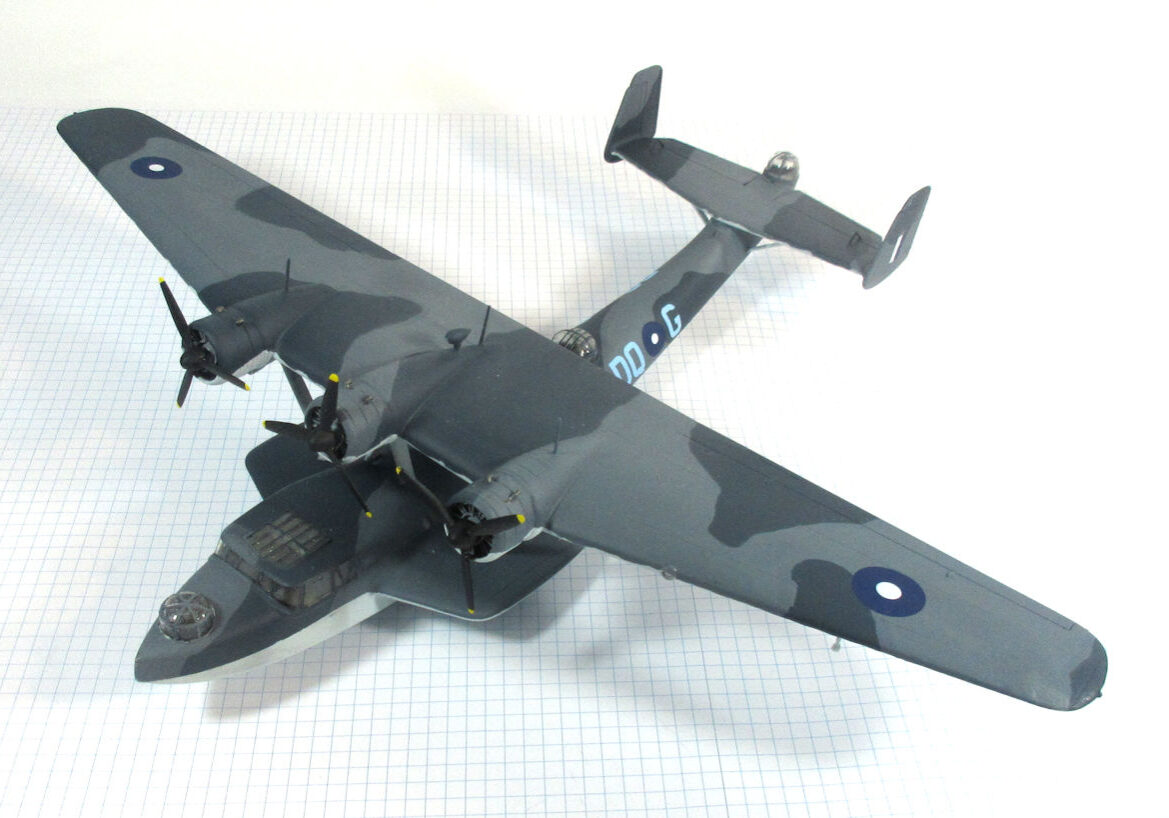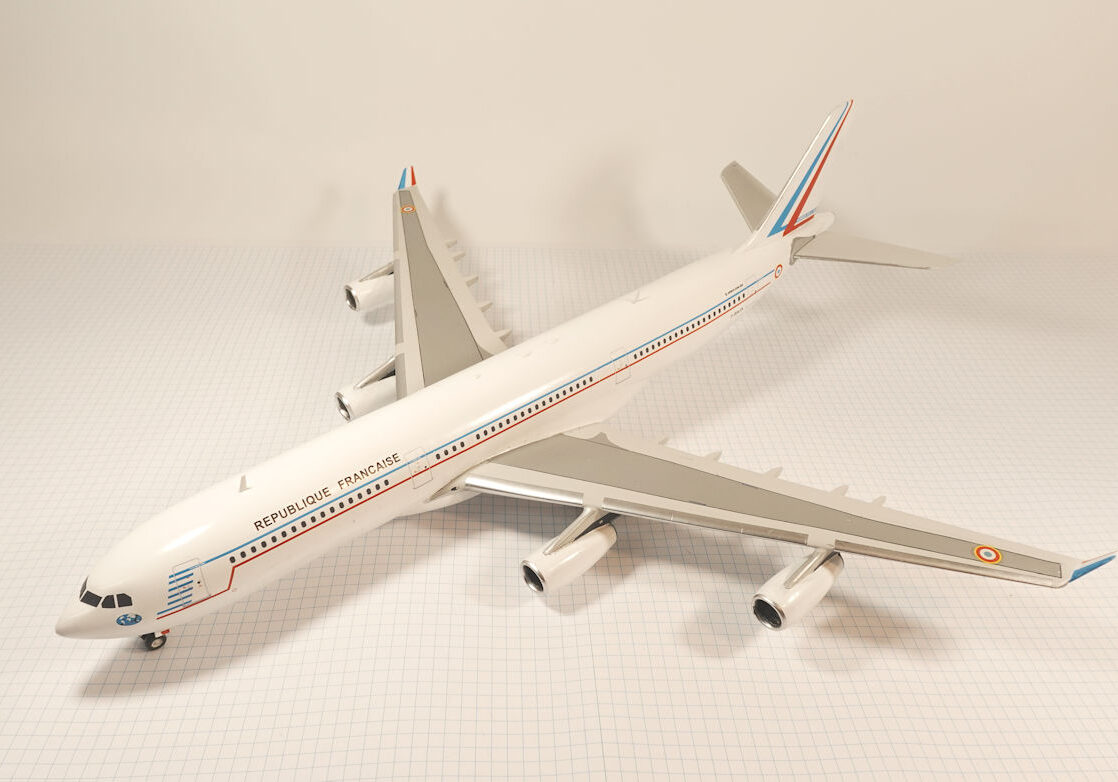History
The X-24B was the rebuilt X-24A, designed as part of tests into the feasibility of creating a stable and controllable lifting body. It flew between 1973 and 1975 and helped in preparing the United States for its Space Shuttle flights.
After the completion of the X-24A test program in 1972 it was returned to Martin Marietta.
There it was reconstructed into the X-24B to test the feasibility of a lifting-body shape that was capable of being flown and landed accurately on conventional runways.
The X-24B made its first flight on 1 August 1973 and completed 36 flights before being retired on 26 November 1975.
It demonstrated that accurate unpowered re-entry vehicle landings were operationally feasible and represented the final stage in flight testing leading to Space Shuttle operations.
The X-24B is now on display at the USAF museum along with a replica of the X-24A.
This model represents the X-24B in about 1974.
Mach 2 1:72 kit completed by Leigh Edmonds in November 2011.


